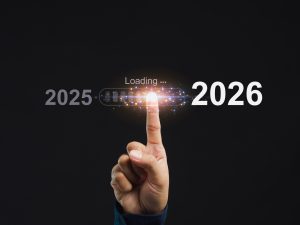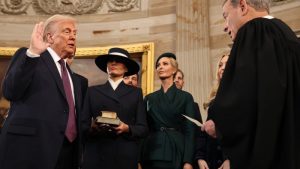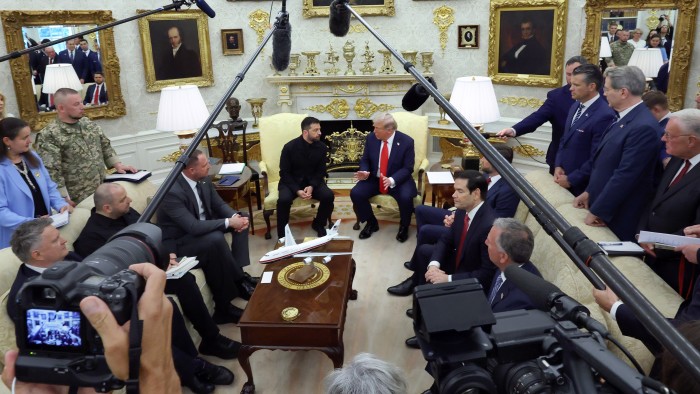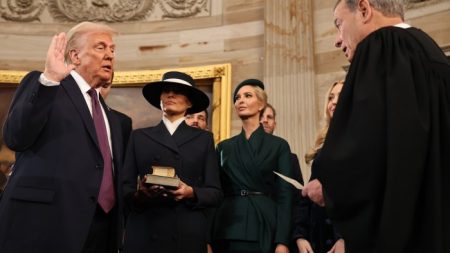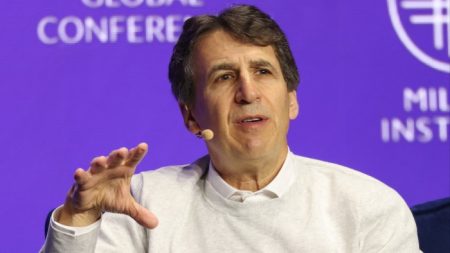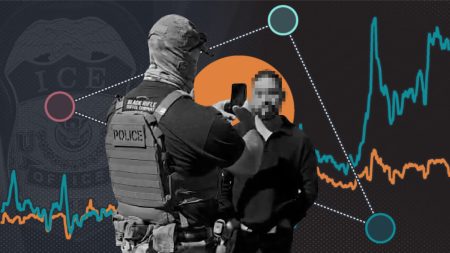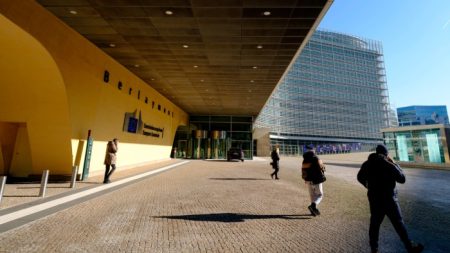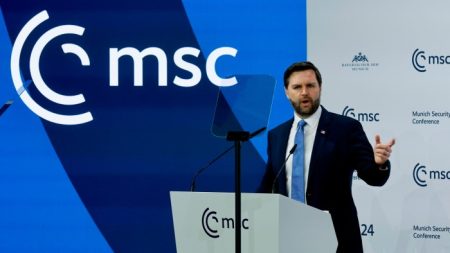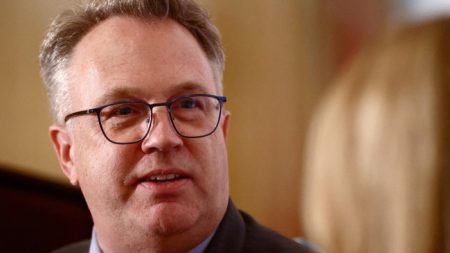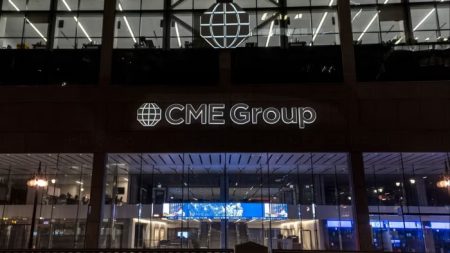Unlock the White House Watch newsletter for free
Your guide to what Trump’s second term means for Washington, business and the world
From the moment Donald Trump greeted Volodymyr Zelenskyy outside the West Wing on Monday afternoon, there seemed to be less personal tension between the men compared with their public spat in late February.
Zelenskyy’s allies had feared another public showdown in the Oval Office — with consequences for Trump’s attitude to Ukraine in its war against Russia. Their fears were unfounded.
The Ukrainian president had accepted Trump’s plea to wear a suit for the occasion instead of his usual military garb. The US president smiled and when a reporter asked what his message was to the people of Ukraine, he responded: “We love them.”
Inside the Oval Office — scene of the bust-up almost six months ago — vice-president JD Vance and secretary of state Marco Rubio were sitting in the same positions on the sofa next to the two leaders.
Vance berated Zelenskyy in February, telling him bluntly that he needed to be more grateful for US support in his war against Russia’s full-scale invasion. This time he said nothing. Only the two presidents spoke.
The ingredients for a new falling out were certainly there. Just last Friday Trump rolled out the red carpet to welcome President Vladimir Putin to a summit in Anchorage, Alaska — and then sided with the Russia’s leader’s stance on the war. Trump dropped his demand for the immediate ceasefire that Zelenskyy and European allies had been pushing for.
The US president also signalled that Ukraine may even need to cede more land to Russia to make peace — a proposition that is fiercely rejected by Kyiv.
But the US did open the door to providing some unspecified security guarantees to Ukraine as part of a peace deal, as long as other European countries and Nato allies bore most of the burden.
In a Truth Social post on Monday morning, Trump was clear that this would not involve Nato membership for Ukraine. His comments alongside Zelenskyy in the Oval Office gave a bit more detail and reiterated his view that Europeans would take the lead.
“We will give [Ukraine] very good protection, very good security,” Trump said. “They are the first line of defence because they’re there, they’re Europe. But we’re going to help them out also. We’ll be involved.”
One light-hearted moment, about the black suit Zelenskyy was wearing, cut through the encounter’s high stakes.
Brian Glenn, a reporter of conservative network Real America’s Voice — and a partner of the firebrand Maga congresswoman Marjorie Taylor Greene — had criticised Zelenskyy in February for turning up at the White House in the wartime fatigues he has become known for.
For a time after that bad-tempered Oval Office meeting, conservative media in the US seized on his attire to criticise the Ukrainian leader.
On Monday, the two men exchanged a friendly laugh about Zelenskyy’s upgraded outfit.
“You look fabulous in that suit,” Glenn said. Trump agreed, saying he told Zelenskyy “the same thing”. The Ukrainian president then joked that Glenn was wearing the same suit as in February.
As well as changing attire, Zelenskyy also praised a letter that US first lady Melania Trump had sent to Putin about the fate of Ukrainian children, including those abducted by Russia.
Zelenskyy handed a letter from his own wife to the first lady. “It’s not to you, [it’s] to your wife,” Zelenskyy told Trump, in a moment of levity. “I want it,” the US president said, with a grin.
Trump and Zelenskyy were due to be joined for lunch by a large cast of European leaders, who hastily flew to Washington to support the Ukrainian leader.

That too marked a big change compared to the clash six months ago, when the Ukrainian leader left the White House abruptly, his own meal with the president scrapped — and America’s allies watched in shock from across the Atlantic.
“[They are] all friends of mine and friends of yours . . . they want to see peace,” Trump said of the European leaders, including UK Prime Minister Sir Keir Starmer, France’s President Emmanuel Macron, and Nato secretary-general Mark Rutte, who had arrived at the White House a few minutes before Zelenskyy.
Despite the much improved tone of the meeting, the outcome of a diplomatic gathering in the White House that could determine not just the fate of Ukraine but Europe’s security as a whole was not settled early in the afternoon.
Just before the press was ushered out of the Oval Office, Trump reminded everyone that Putin would also determine what happened next, including a trilateral meeting with him and Zelenskyy.
“I just spoke to president Putin indirectly, and we’re going to have a phone call right after these meetings today,” Trump said. “We may or may not have a trilat. If we don’t have a trilat, then the fighting continues,” he said.
Read the full article here

